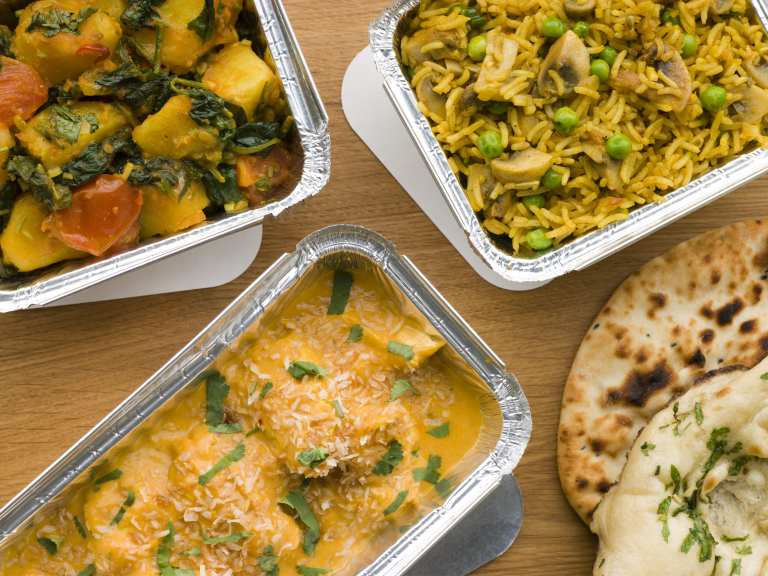
While large QSR chains have the resources to develop in-house loyalty and rewards programs, independent restaurants and regional chains often struggle to develop their own. In this month’s Mobile Order-Ahead Tracker, Ritual’s CEO and Co-founder Ray Reddy discusses how the mobile ordering platform helps small restaurants compete with big chains, and the metrics smaller QSRs should track to restore their competitive edge.
There are hundreds of mobile order-ahead options in the market, with nearly every large quick-service restaurant (QSR) in the United States operating their own apps and rewards programs. Mobile orders are immense revenue drivers — accounting for 11 percent of total QSR sales. However, many mom-and-pop restaurants and regional chains do not have the necessary resources to develop their own solutions, forcing them to miss out on potential sales.
Mobile ordering app Ritual, which operates in major cities across North America, seeks to help small QSRs compete by offering order-ahead capabilities. PYMNTS recently spoke with Ray Reddy, Ritual’s CEO and co-founder, about how the app boosts small restaurants’ revenues by equipping them with the valuable features that large chains offer.
Exposure To New Customers
Reddy stated that Ritual was born out of a key observation about the restaurant industry.
“A lot of restaurants think that the people in their neighborhood have all visited them,” he explained. “They feel like everyone in the neighborhood is a regular there. But what we find is that the vast majority of people in most neighborhoods haven’t actually visited the vast majority of spots.”
Ritual combines a variety of restaurants onto a single app, encouraging customers to try spots they have yet to visit. The app also features a piggyback system, which allows users to broadcast their orders to their co-workers, who can add items for the initial customer to pick up.
“It’s basically a productized version of you turning around to your cube mates and saying, ‘Hey, I’m going to grab a coffee. Do you want something?’” Reddy said. “It’s that, but … you don’t have to deal with payment, and everyone customizes their orders separately. Then you just come back with an extra cup of coffee or an extra salad in your bag.”
The piggyback system took some heat last year after it inadvertently exposed confidential government offices. Many Department of Homeland Security (DHS) office locations are kept secret for security purposes, but reporters were able to determine exact buildings and floors by pretending to be agency employees on the app.
“After that, we created a blacklist,” Reddy said. “We have certain companies that either can’t create teams, or can’t have teams that are publicly discoverable.”
Ritual Rewards
Rewards programs are popular with large QSR chains, but they are relatively uncommon among independent restaurants — for good reason.
“For a lot of smaller restaurants, there’s just not enough locations or frequency, and it’s not worthwhile collecting points or rewards,” Reddy said. “The reality is, if you’re not one of the top-10 big chains, it’s just difficult for you to use rewards to really change behavior.”
Restaurants that partner with Ritual have the opportunity to join the app’s point-based rewards system. Users can redeem points at any restaurant in the network, no matter where they are earned. Restaurants can also opt in to Earn Plus, a feature that offers customers extra rewards points when they make repeat visits to the same restaurant in a short period of time. The time frames are dynamically generated for every restaurant visited by each user.
“It’s a clever algorithm that looks at how often you’d normally come back, and gives you a shorter time frame to come back and make a second purchase within that window,” Reddy explained. “Let’s say you go to a salad spot once every week. What [Ritual] might say is that if you come back in four days instead of seven days, for example, we’ll give you 10 times the rewards points for that second visit. But there’s another spot where you go to every month, then you might only get two weeks to come back.”
Restaurants that have joined this program have seen their average visit frequency increase up to 25 percent, Reddy noted.
Picking Up Lunch, With Data On The Side
One of the biggest challenges for restaurant operators in the pre-digital age was that their usable data was largely determined by total sales. Restaurant owners knew what and how much they sold, but had little insight beyond those factors. Digital ordering provides a much clearer window into who patronizes a restaurant, and what they’re ordering.
“For the first time, restaurants have what I call the equivalent of Google Analytics,” Reddy explained. “Not just from [Ritual], but from a lot of third parties. If 100 people tried the restaurant this month, how many of them came back and made a repeat visit? And why is that different across your different stores? Is it because of the staff training problem? Is it because of a speed problem?”
Using this data, restaurants can compile an accurate list of key performance indicators (KPIs), allowing them to paint a more comprehensive picture of what they’re doing right, and how to correct what they’re doing wrong. As valuable as the data gathered by mobile ordering apps is, though, it’s far less useful if it can’t be compared to similar local restaurants. Ritual gathers that information and shares it with its member businesses, granting them a chance to be more competitive.
“If you’re a sushi spot, [Ritual shows you] what other sushi spots look like with these KPIs in your neighborhood,” he said.
While large QSR chains may have greater resources for in-house analytics, platforms like Ritual can give independent restaurants the insights — and additional revenues — they need to get a leg up.